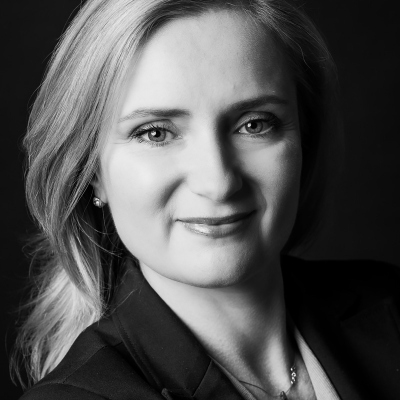Advertising of medical devices and collaboration with influencers
Significant changes are coming for medical device advertising. The rules will be much stricter than before, but still more lenient than drug advertising regulations. For the first time, the new Medical Devices Act regulates influencer advertising. It is already clear that sponsored content will be deemed to be advertising and thus must meet specific requirements under the Medical Devices Act. Companies have until the end of the year to sort out their relationships with influencers.
Influencers and advertising
Although Chapter 12 of Poland’s Medical Devices Act of 7 April 2022 does not provide a legal definition of advertising, under Art. 58(1)(3) of the act, if the user of a medical device obtains a benefit from directing opinions to the public about a medical device, that should be deemed to constitute advertising of medical devices.
Undoubtedly, this provision applies to the activities of popular figures on social media, commonly known as influencers. Indeed, the scope of the meaning of this concept can be quite broad, as the drafters abandoned the term “person known to the public,” which is used, for example, in Art. 55(1)(1) of the Pharmaceutical Law of 6 September 2021. The new act refers to “the user of a device obtaining a benefit from directing information to the public about the device.” Thus, the group of people who will be subject to the new regulation seems very wide. Its boundaries are not clarified by EU acts, particularly the Medical Devices Regulation ((EU) 2017/745), as the EU lawmakers left the detailed regulation of product advertising to national lawmakers.
In the decisional practice of the president of the Polish Office of Competition and Consumer Protection (UOKiK) (e.g. decision of 20 June 2022, no. RBG-3/2021), influencers are defined as persons publishing advertising content on social networks (e.g. Instagram, Facebook, YouTube, TikTok, or blogs).
What are influencers not allowed to do?
The law has not introduced specific rules in this regard. At the same time, any restrictions on product advertising should be derived from the general provisions in Chapter 5 of the act.
In the practice of influencers’ activity promoting medical devices, the following are of particular importance:
- Ban on directly urging children to purchase advertised products or urging their parents or other adults to purchase such products for them
- Ban on misleading consumers about, among other things, the application and performance of the device, failing to inform the user of the likely risks of using the device as intended, or suggesting uses of the device other than those intended by the producer
- Ban on promoting products intended for use by professionals.
Influencers’ obligations under the draft regulation of the Minister of Health
Pursuant to Art. 60 (1) and (3) of the new law, advertising of medical devices in an audiovisual (e.g. video), audio (e.g. podcast) or visual form (e.g. photos shared on social media profiles) must include at least the name or trade name of the device and the use of the device. More information and the manner of presentation of medical device advertising are to be governed by an executive regulation of the Minister of Health, the first draft of which appeared on 28 July 2022 (no. 1350).
The key is the use of mandatory warnings, the content of which resembles the content of warnings appearing in the advertising of medicinal products. Section 4(1) of the proposed regulation provides for two types of warnings:
- For devices for which no contraindications have been identified
- For devices with identified contraindications (supplemented with the parenthetical):
“This is a medical device. For safety, use it according to the instructions or label. If in doubt, consult a specialist (as this medical device may not be suitable for you).”
Neither the proposed regulation nor the act exempts influencers from the obligation to apply such warnings in the advertising they conduct, so they, too, cannot omit the indicated content in the posts or videos they share. Moreover, according to the draft regulation, a warning on the use of the medical device should be:
- Placed in the lower part of the advertisement in an audiovisual form and occupy no less than 20% of its area or 10% of its area in the case of advertising in a visual form
- Clearly understandable in Polish, and in the case of audiovisual advertising, appearing on the screen for at least 8 seconds
- Distinguished from the background with text that is visible, legible, still, and placed horizontally, with the distance of the letters from the lower and upper edges of the background not greater than half the height of the letters, while the distance between the lines of the text shall not be greater than the height of the letters.
The biggest practical concern is the obligation to indicate the information on all tangible and intangible benefits received from the advertiser. The influencer must inform audiences that he or she has received a fee, in graphic or audio form in each advertisement, presenting this content just like the aforementioned product warnings. This is to be done on the basis of the appropriate application of provisions, understood as application of provisions directly, with relevant modifications, or not applying them when they are not relevant. In principle, the provisions regarding font size and location, as well as showing this content for at least 8 seconds, should also apply to influencers disclosing the benefits they have obtained. Most likely, this detail will be decided by the practice of the president of the Office for Registration of Medicinal Products, Medical Devices and Biocidal Products (URPL), which, as part of its supervisory duties over medical device advertising, should standardise the requirements, for example in the form of guidelines, instructions or circulars.
The regulation is currently in the public consultation stage. Undoubtedly, it raises considerable practical challenges and seems ill-suited to current influencer practices. Influencers promote products through posts on social networks, by publishing photos of medical devices along with a description, among other ways. The current wording of the draft regulation does not make it possible to clearly define whether the obligatory warnings or information about the benefits obtained by influencers should be placed in the graphics presenting the medical device or it is enough to include them in the description of the advertised device placed under the graphics or photo. The regulation only mandates the inclusion of a warning or benefit statement in medical device advertising, the definition of which is still lacking. It can be assumed that an advertisement also (or perhaps mainly) includes a description of the device (in text rather than graphic form). In such a description, in particular, it is technically impossible to meet the requirements for the font size and the distance between the lines of the text.
Additionally, content posted by influencers on social media should be labelled in a way that is unambiguous and does not raise doubts in the viewer’s mind about the nature of the post. From the past practice of UOKiK, it can be concluded that influencers should clearly inform their recipients that the content they are publishing is advertising and results from commercial cooperation. To avoid giving consumers the impression that a given advertising post represents the influencer’s independent opinion, creators should use unambiguous labels such as “advertising/commercial collaboration,” not merely using tags like #ad or #collaboration. As UOKiK points out, such a label should be placed in a highly visible location, i.e. not at the end of the description or under the user name.
Who is responsible for unlawful advertising?
In principle, the economic entity that conducts such advertising is responsible for its compliance with the provisions.
Doubts may arise, for example, when the Office for Registration of Medicinal Products, Medical Devices and Biocidal Products alleges an infringement in connection with an advertisement of devices to which the economic entity did not consent, but which was nevertheless published online. In such a situation, will a business entity also be held liable for violating advertising restrictions, in accordance with a basic feature of administrative fines, which is the objective liability of the entity regardless of fault? An affirmative answer to this question would contradict Art. 103(2) of the new law, under which a fine of up to PLN 2,000,000 is imposed on anyone who conducts advertising in violation of the applicable provisions, regardless of status. Thus, the procedures involved in the approval of a given advertisement by a business entity and the cooperation agreements entered between these entities and the agencies on whose behalf the influencers usually act will be crucial.
Significantly, based on the Competition and Consumer Protection Act, influencers themselves, as well as the company commissioning the advertising, may be liable for mislabelling sponsored content. The penalty for infringing the collective interests of consumers may amount to up to 10% of the infringer’s turnover in the fiscal year preceding the year when the fine is imposed. Thus, not only creators of content, but also advertisers, are the focus of UOKiK’s attention.
An example is the supplement manufacturer Olimp Laboratories, which was accused by the president of UOKiK of using surreptitious advertising. The information published by the regulator shows that the company commissioned influencers to advertise its products on social media, and in correspondence with content creators urged them to use unclear labels, contrary to the recommendations communicated by UOKiK.
Summary
Despite the relatively sparse wording, the new provisions are likely to reverberate in both the medical and advertising industries, also due to activity by the competition authority on mislabelling advertising content published by influencers. Indeed, such activity may mislead consumers and thus constitute a practice infringing the collective interests of consumers.
For the first time, the provisions governing the advertising of medical devices are on the surface clear, but in practice they raise doubts whether the drafters anticipated the technical problems in complying with the proposed regulation. The provisions on compulsory display of a medical device warning are modelled on, but not the same as, those in place under the Pharmaceutical Law for drug advertising.
When conducting advertising of medical devices using influencer marketing, it is important to remember the obligation to clearly inform consumers that the content published by the creators is advertising and results from commercial cooperation. Otherwise, both the influencer and the advertiser may expose themselves to the allegation of a practice infringing the collective interests of consumers, consisting in misleading consumers in the manner in which the advertising content is presented.
Currently, the Office of Competition and Consumer Protection is working on recommendations for social media users regarding the labelling of commercial content, which will certainly make it easier for businesses to cooperate with creators of advertising content, and for influencers to publish material in a way that complies with consumer protection laws.
Joanna Krakowiak, attorney-at-law, M&A and Corporate Practice, Life Science & Healthcare practice, Wardyński & Partners
Weronika Nalbert, adwokat, Competition & Consumer Protection practice, Wardyński & Partners
Jolanta Prystupa, M&A and Corporate Practice, Life Science & Healthcare practice, Wardyński & Partners


